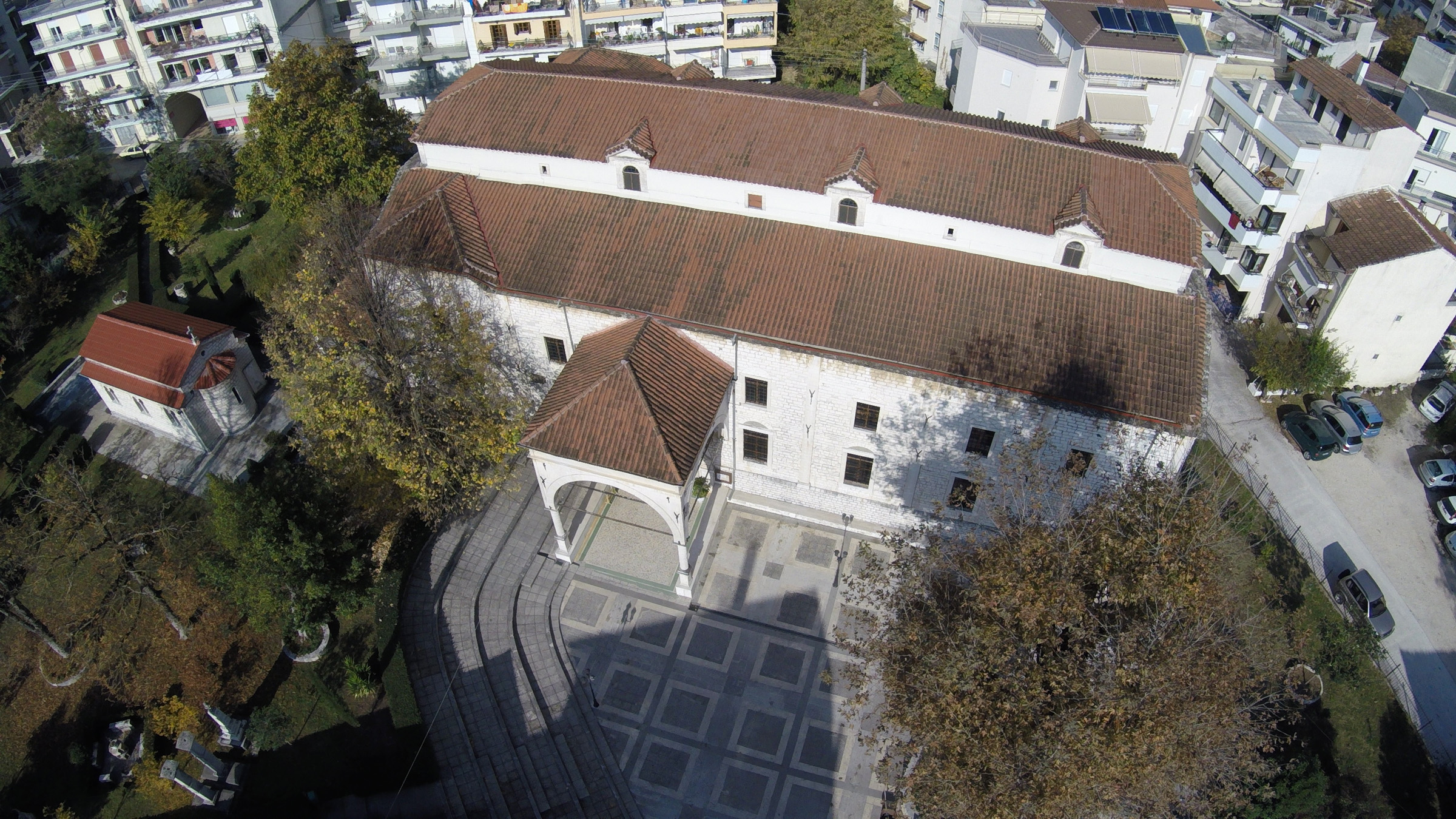History of the monument
The temple of Archimandreio was the church/ of the monastery of Archimandreio or otherwise Kyra Chimantriotissas. The name derives from the fact that this monastery had the leading role among the other monasteries of Ioannina as it was the residence of the archimandrite abbot. According to another tradition a young shepherd girl who was grazing her flock of sheep, within the monastery area, noticed that birds avoided roosting on a plane tree, north-east of the present church.
Some people climbed up the tree to find that among the leaves was an icon of Virgin Mary. Because of this event a little church was built there, which became a place of pilgrimage and later a monastery.
The monastery was first mentioned in written sources in 1383 on the occasion of the transition of abbot Gabriel in Constantinople where he met Emperor Manuel II Palaeologus. Official information about the monastery is found in the Synodical Act of the patriarch Metrophanes G. (1565-1572) in 1571. The Act showed that: a) In 1571 the city was not extended until Archimandreio. b) The monastery was Stavropegic, ie. it belonged to the jurisdiction of the Patriarchate.
Archimandreio has been a convent since the 15th century. Probably after 1480 the monastery of St Paraskevi had been demolished when the area was inhabited by Turks and in the monastery’s place they erected Namaz Gkiach mosque. The nuns moved to the monastery of Archimandreio. They use to wear the same clothes as the other women but in black colour in order to distinguish. They were occupied with weaving thin silk fabrics, as well as cotton fabrics. Furthermore, they assisted in all the joyful or sad events of the families of the city of Ioannina. Throughout the period of Ottoman domination until the last decades of the 19th century the nuns developed intense charitable activities taking care of widows and people who suffered from mental illnesses and tuberculosis. In the late 19th century a small commune was established with cells in which unmarried daughters of noble origin, led a monastic life.
As for the location and the history of the church, the sources speak of successive building phases as evidenced by the inscriptions carved at the entrance and the lintel of the south door of the sanctuary. The temple was destroyed during the rebellion of Dionysios the Philosophos and rebuilt in 1627. The second construction dates back to 1852 on prelacy of the archbishop of Ioannina, Ioannikios, while the third and final construction phase lasted from 1858 until 1864.
Architectural elements of the Temple
The church has the form of a three-aisled domed basilica with three arches east and a narthex to the west while at the western portion an elevated zenana loft is formed.
The temple of the church is made of marble with neoclassical elements. The retained frescoes decorating the interior of the church were made by Theodoros Boulogiannis in 1885 and a there is also a set of murals in the northern loft dating from the last decades of the 19th century.
Remarkable relics of the 17th and 18th centuries are kept inside the church, among which stands out the icon of Archimandreiotissa which dates to the early 13th century. Of particular interest is the icon of “Joy be on Thee” work of 1654, which bears the signature of Theodoros Poulakis, an artist of the last period of the Cretan School.
Among the relics of the temple remarkable codes, dating from the 12th to the 18th century and functional relics (a grail of 1672 and a gospel of 1884 with silver bindings) are included.
The monumental bell tower which was built in 1936 designed by the architect Aristotelis Zachos has a particular style that refers to the standards of the urban architecture of the late 19th century and early 20th.







































































































